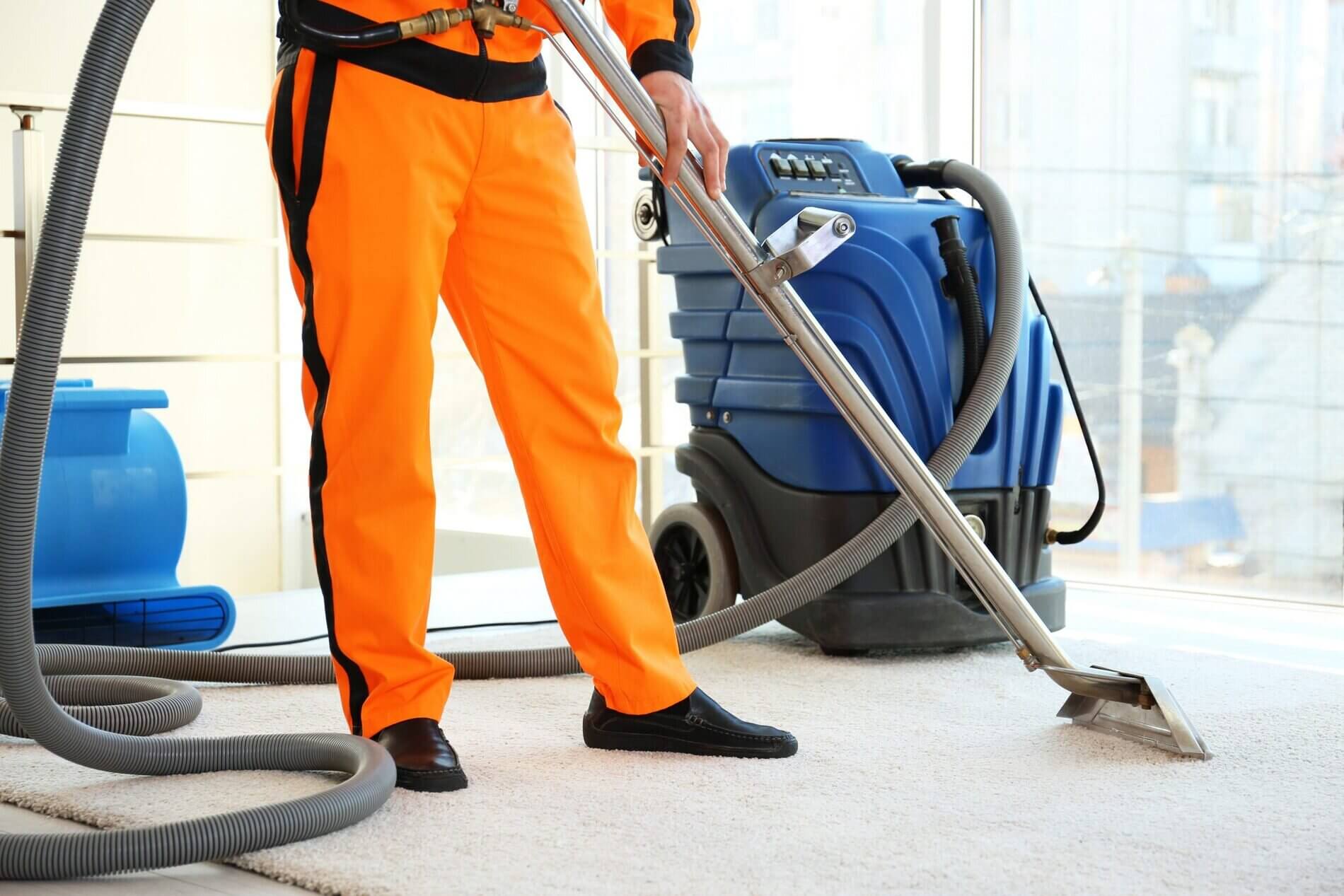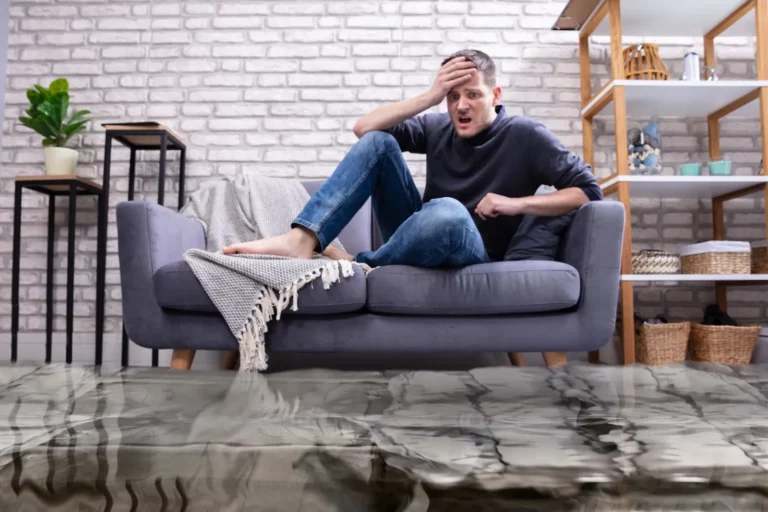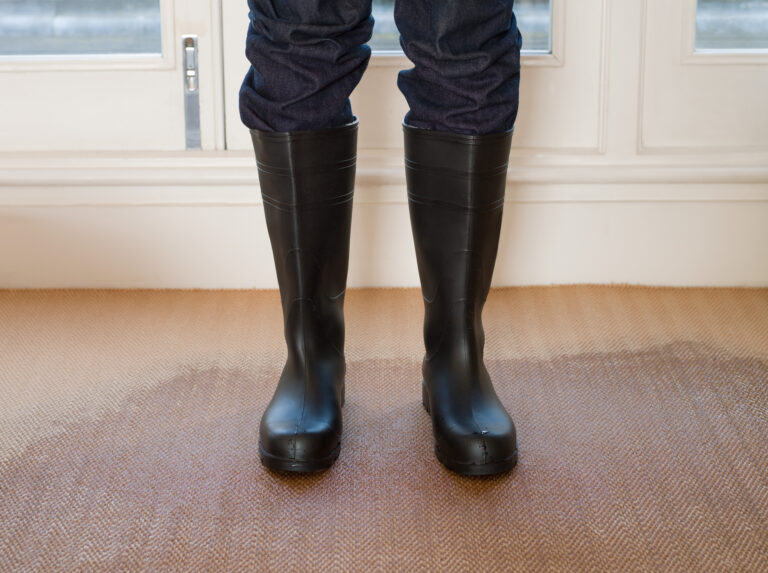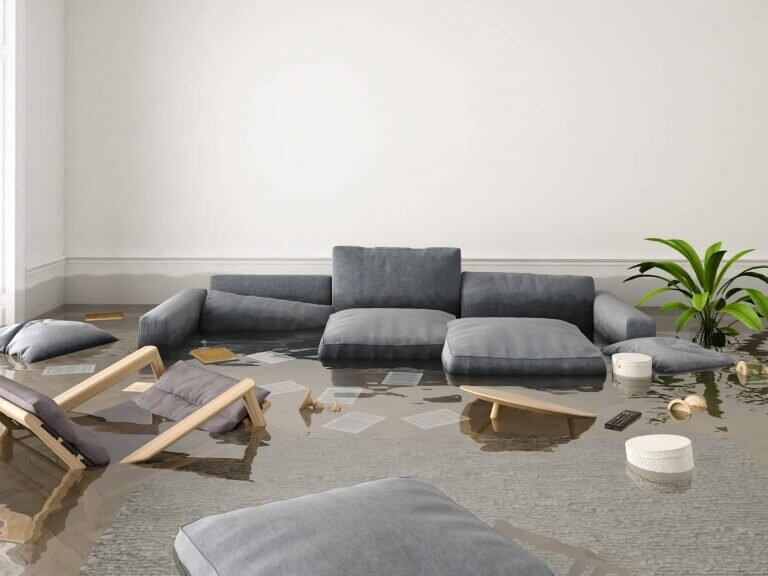If you’ve ever had flood damaged carpeting, you know it’s not a fun experience. Not only do you have to worry about the water itself, but there’s also the risk of bacteria and mould growth, as well as mildew and that dreaded musty smell.
Before you get started, it’s important to walk around the space and check for loose power cables, foundation cracks, or any other safety issues.
Read on to discover our flooded carpet cleaning tips, on how to clean and dry your flooded or wet carpets and prevent further damage – so you can get your home back to normal as quickly as possible.
Flooded Carpet Restoration Steps
1. Remove Furniture
If you have carpet damaged by flooding, it’s important to remove any furniture from the room before treating it. Otherwise, you could end up with water damage to your items as well as your carpet.
Start by ensuring there are no exposed wires, broken pipes, or other safety hazards present.
If possible, get a friend to help move your items. This will make it easier and prevent any damage to the furniture or carpet. Move the heaviest pieces first.
Once everything is out of the room, you can begin to treat the carpet.
2. Extract Water from the Carpet
Using a wet/dry vacuum is the most effective way to remove as much water from a flooded carpet as possible. If you don’t have access to one, they are available to rent at most local hardware stores.
Alternatively, you can use a carpet extractor. This is a special machine that is designed to remove water from carpets. If you don’t have access to a carpet extractor, you can try using a regular vacuum cleaner with the hose attachment.
Water extraction is a crucial step in salvaging your flooring and carpeting.
3. Dry the Carpet
There are a number of different ways to dry a flooded carpet. The first is to simply let it air dry. This can take a few days, depending on the size of the carpet and the amount of water that it has been soaked in.
Another option is to use floor or ceiling fans to help speed up the drying process. If you can’t get the carpet thoroughly dried, you may need to remove it. This will present the formation of nasty mould and other pathogens that could make the room unsafe to live in. If you’re unsure, call RESTATE to give you a hand.
4. Evaluate Carpet Underlay
This is a crucial step in taking care of a flooded carpet in order to prevent nasty mould growth. Once you’ve moved your furniture, removed excess water, and allowed the carpet to thoroughly dry, you’ll need to inspect the underlay underneath the carpet to ensure it’s salvageable.
Even if the carpet can be saved, the underlay may need to be replaced.
If you’re unsure about whether you can save your carpet underlay, or any other step in the process of saving a flooded carpet, call RESTATE to assess the damage and determine whether it requires professional cleaning.
How Long Does it Take a Carpet to Dry After a Flood?
It can take anywhere from a few hours to a few days to dry a wet carpet. The amount of time it will take to dry your carpet depends on a number of factors, including the severity of the flooding, the type of carpet, and the weather conditions. Drying the carpet thoroughly usually takes a few days.
Other Considerations When Dealing with a Flooded Carpet
In addition to the process outlined above on saving your wet carpet, there are a few factors that must be taken into consideration when determining whether to save your carpet or not.
Types of Water Contamination
There are a few ways that flood waters can become contaminated. In general, there are three categories of floodwater: categories 1, 2, and 3.
- Category 1 water is uncontaminated water from a clean source, such as a broken water supply line or rainwater. It poses minimal risk of illness or discomfort. However, if Category 1 water sits in the structure for an extended period, or if it comes into contact with other materials, it can degrade to Category 2 or 3 water, increasing the risk of contamination.
- Category 2 water contains contaminants that may cause illness or discomfort after exposure. Classified as grey water, this category includes flood water originating from an unclean source or water that has come into contact with contaminated surfaces. Category 2 water has typically been sitting in the structure for 3-5 days.
- Category 3 water, also known as black water, is highly contaminated and may contain pathogenic or unsanitary agents. This category includes water that has been in contact with sewage or underground water sources, such as rivers and seas. Category 3 water poses an extreme health hazard, especially if it has been sitting in the structure for over 5 days.
Severity of Damage
Once you’ve identified that your carpet has been flooded, it’s important to assess the severity of the damage. This will help you determine whether you need to replace the entire carpet or if only certain sections need to be replaced.
This is also a determining factor on whether you can deal with your wet carpet on your own or need to call in professionals to help clean up the mess.
RESTATE Property Restoration Can Help With Your Flooded Carpet
RESTATE can help with all of your flood restoration needs following water damage. If you want to restore your home and get back to normal life quickly, give us a call today to see how we can help. We offer flood restoration and carpet drying services across Auckland and Hamilton.




